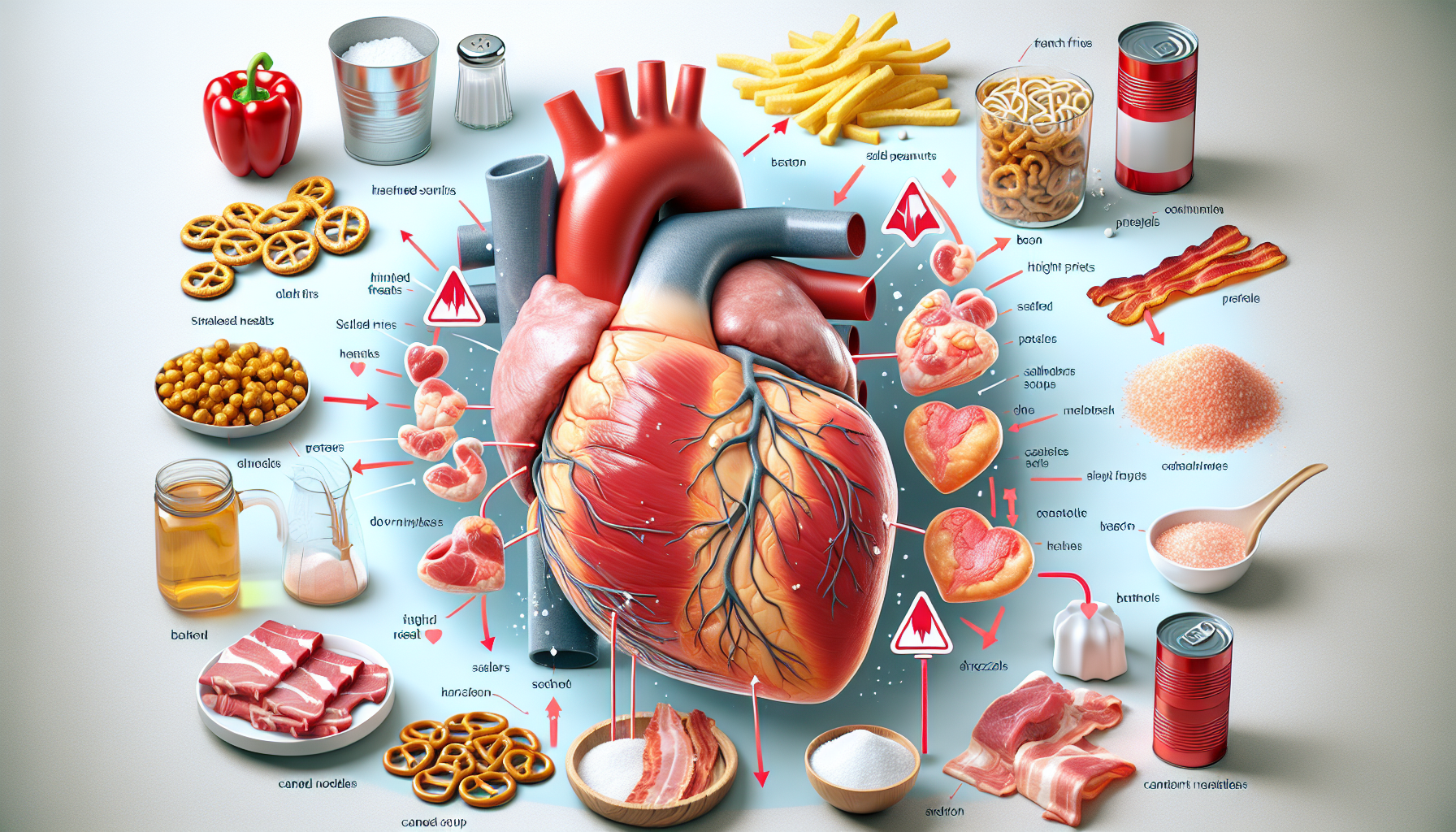Salt is a fundamental part of the human diet. It enhances flavor, preserves food, and is essential for bodily functions. However, the impact of salt consumption on heart health is a growing concern. Excessive salt intake has been linked to high blood pressure, which is a major risk factor for heart disease and stroke. This article explores the intricate relationship between salt and heart health and offers strategies to manage salt consumption for better cardiovascular outcomes.
Understanding Salt and Its Role in the Body
Salt, or sodium chloride, is an electrolyte that helps regulate fluid balance and is critical for nerve and muscle function. While the body needs some salt to function correctly, most people consume far more than necessary. The American Heart Association recommends no more than 2,300 milligrams a day and moving toward an ideal limit of no more than 1,500 mg per day for most adults.
The Link Between Salt and High Blood Pressure
One of the most significant impacts of salt on the body is its ability to increase blood pressure. When you consume too much salt, your body holds onto water to try to dilute it. This extra water increases your blood volume, which means your heart has to work harder to pump it, leading to higher blood pressure. Over time, this can strain the heart, damage blood vessels, and increase the risk of heart attack, stroke, and other health issues.
For a thorough understanding of how high blood pressure affects the heart, The Role of Omega-6 Fatty Acids in Cardiovascular Health provides valuable insights into dietary factors that can influence blood pressure and heart health.
Dietary Sodium and Heart Disease
Heart disease remains the leading cause of death worldwide, and diet plays a crucial role in its development. Studies have shown that populations consuming diets low in sodium have lower rates of heart disease. A diet high in sodium can lead to atherosclerosis, a condition where plaque builds up in the arteries, increasing the risk of heart attack and stroke.
How Much Salt is Too Much?
Most of the sodium we consume comes from processed and restaurant foods. It’s not just the salt shaker on the table; it’s the hidden salt in our diets that contributes to excessive intake. Understanding food labels is essential, as is being mindful of the sodium content in foods like bread, pizza, soups, and processed snacks.
For readers interested in how nutritional choices affect heart health, the article Improving Vascular Health Through Targeted Nutrition offers compelling information on optimizing one’s diet for better cardiovascular outcomes.
Strategies to Reduce Salt Intake
Reducing salt intake doesn’t mean sacrificing flavor. Here are some strategies to help minimize salt consumption:
- Cook at Home More Often: Cooking at home gives you control over the amount of salt in your food.
- Use Herbs and Spices: Enhance the flavor of your meals with a variety of herbs and spices instead of relying on salt.
- Read Food Labels: Pay attention to the sodium content listed on nutrition facts labels and choose lower-sodium options.
- Rinse Canned Goods: If you use canned vegetables or beans, rinse them under water to remove some of the added sodium.
- Choose Fresh or Frozen Vegetables: Opt for fresh or frozen produce over canned, which often contains added salt for preservation.
- Watch for Sodium in Condiments: Sauces and dressings can have high sodium content, so use them sparingly or look for low-sodium versions.
For more tips on creating heart-healthy meals, the resource Maximizing Cardiac Health with High-Intensity Interval Training provides additional insights into maintaining cardiovascular health through lifestyle choices.
Understanding the Risks for Specific Populations
Certain populations may be more sensitive to the effects of sodium on blood pressure. These groups include people with hypertension, diabetes, chronic kidney disease, and older adults. It’s also noted that African Americans may respond to sodium reduction more significantly than other ethnic groups.
Salt Substitutes and Their Role in Heart Health
Salt substitutes can be a part of a heart-healthy diet for some individuals. These products often replace some or all of the sodium with other minerals like potassium. However, those with kidney disease or on certain medications should consult their healthcare provider before using salt substitutes.
The Broader Context of Cardiovascular Health
Salt intake is just one aspect of cardiovascular health. A holistic approach includes regular physical activity, stress management, not smoking, moderate alcohol consumption, and a balanced diet rich in fruits, vegetables, whole grains, lean protein, and healthy fats.
For a comprehensive look at cardiovascular health, visit Cardiovascular Health which encompasses a wide range of topics and preventative strategies to support heart health.
High-Quality Resources for Further Reading
To delve deeper into the science behind salt and heart health, consider these niche resources:
- Sodium and Potassium Intakes Among US Adults provides a detailed analysis of the American population’s sodium and potassium consumption and its implications for hypertension and heart disease.
- Dietary Sodium and Health offers a comprehensive review of the current evidence on dietary sodium and its effects on health outcomes.
- The Role of Sodium in Hypertension is More Complex Than Simply Elevating Arterial Pressure explores the complex relationship between sodium intake and hypertension, challenging the traditional views on salt and blood pressure.
In conclusion, while salt is an essential nutrient, it’s clear that moderation is key to maintaining heart health. By understanding the impact of salt on the body and implementing strategies to manage intake, individuals can significantly reduce their risk of heart disease and improve their overall well-being. As always, it’s important to consult with healthcare providers for personalized advice and to ensure that dietary changes align with individual health needs.



